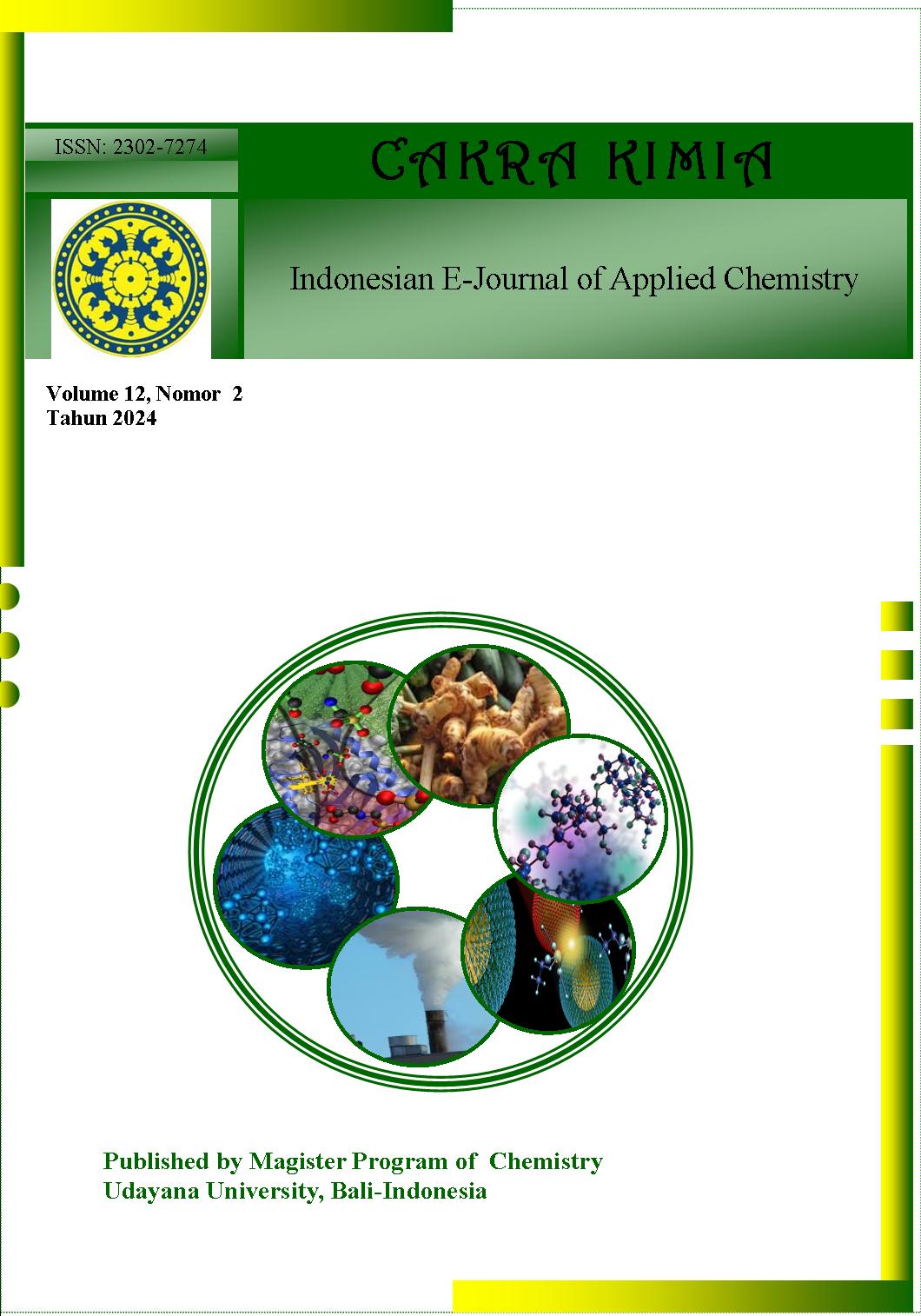SINTESIS FOTOKATALIS NANOPARTIKEL PERAK (NPAg) DENGAN BIOREDUKTOR EKSTRAK DAUN SIRSAK (Annona muricata L.) DAN APLIKASINYA DALAM FOTODEGRADASI ZAT WARNA CONGO RED
Abstract
ABSTRACT: The rapid development of the textile industry has provided many benefits, but also has a negative impact, especially on environmental pollution, as a result of poor waste management. One of the dye wastes that are difficult to degrade in nature is Congo Red dye waste. This study aims to synthesize silver nanoparticles using a bioreductant of soursop leaf extract which will be used to degrade Congo Red dye. The synthesis of NPAg was carried out on variations in the volume of soursop leaf aqueous extract with AgNO3 solution, namely 1:9; 2:8; 3:7; 4:6; 5:5, and carried out at 40, 50, and 60°C. identification of NPAg formed using UV-Vis spectrophotometry and Particle Size Analyzer (PSA). The results showed that the NPAg formed at the ratio of the volume of soursop leaf water extract to AgNO3 solution 3:7 at a temperature of 40°C gave the best results, because it has a maximum wavelength of 433.40 nm, size 49.30 nm, has a Polydispersity Index (IPd) value is 0.232, and the zeta potential value is -6.41 mV. Photodegradation of Congo Red with NPAg was carried out under optimum conditions, namely 1 mL of NPAg volume, 3 hours of degradation time, and pH 2 capable of degrading Congo Red dye by 98.70%.
Downloads
References
[2] Singh, A., Shalinee, J., Garima, S., Preeti, S., and Prerana, G. 2013. Silver Nanoparticles As Fluorescent Probes: New Approach For Bioimaging. Scientific and Technology Research, 2 (11) : 1-6.
[3] Suprihatin, I. E., Lestari, G. A. D., Mardhani, R., and Edoway, V. 2020. Silver Nanoparticles (AgNPs) as Photocatalyst in The Photodegradation of Rhemazol Brilliant Blue. Joint Conference on Chemistry: Materials Science and Engineering, 959 : 1-6.
[4] Lestari, G. A. D., Suprihatin, I. E., and Sibarani, J. 2019. Sintesis Nanopartikel Perak (NPAg) Menggunakan Ekstrak Air Buah Andaliman (Zanthoxylum acanthopodium DC.) dan Aplikasinya Pada Fotodegradasi Indigosol Blue. Jurnal Kimia Sains dan Aplikasi, 22 (5) : 200-205.
[5] Sangi, M.S., Momuat, L.I. dan Kumaunang, M. 2013. Uji Toksisitas dan Skrining Fitokimia Tepung Gabah Pelepah Aren (Arange pinnata). Manado : Universitas Sam Ratulangi.
[6] Angelina, M., Turnip, M., Khotimah, S. 2015. Uji Aktivitas Antibakteri Ekstrak Etanol Daun Kemangi(Ocimum Sanctum L.) Terhadap Pertumbuhan Bakteri Escherichia Coli dan Staphylococcus Aureus. Protobiont 4(1): 184-189.
[7] Kumar, S. and Pandey, A. K. 2013. Chemistry amd biological activities of flavonoid:An overview. The Scientific World Journal. 2013. 1-16.
[8] Widiantini, N.L.P, Sibarani, J., Manurung, M. 2013. Studi Fotodegradasi Congo Red Menggunakan UV/ZnO/Reagen Fenton. Jurnal Kimia, 7 (1). 82-90.



 Petunjuk Penulisan
Petunjuk Penulisan
